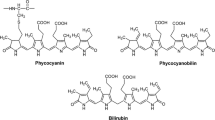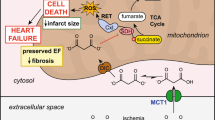Abstract
In the present study, we tested the protective effect of 3,4,5,6-tetrahydroxyxanthone, a synthetic xanthone derivative, on myocardial ischemia-reperfusion injury in rats. Ischemia-reperfusion injury was induced by 30 min of global ischemia and 30 min of reperfusion in isolated rat hearts or 30 min coronary artery occlusion and 120 min reperfusion in vivo, respectively. Heart rate, coronary flow (CF), left ventricular pressure (LVP), and its first derivative (±dp/dt max) were recorded, and the activity of creatine kinase in coronary effluent and tumor necrosis factor-alpha (TNF-α) content in myocardial tissues were measured in vitro. The activity of serum creatine kinase, the level of TNF-α and interleukin-6 (IL-6), and myocardial infarct size were measured in vivo. 3,4,5,6-tetrahydroxyxanthone (30, 100 or 300 μM) caused a significant improvement of cardiac function (LVP and ±dp/dt max) and a decrease in the release of creatine kinase in coronary effluent as well as the level of TNF-α in myocardial tissues in vitro. 3,4,5,6-tetrahydroxyxanthone (0.5 or 1.0 mg/kg, i.v.) also markedly decreased infarct size and the release of creatine kinase and TNF-α, and increased serum IL-6 level in vivo. These results suggest that 3,4,5,6-tetrahydroxyxanthone possesses a protective effect on myocardial ischemia-reperfusion injury, and that the protective effects of 3,4,5,6-tetrahydroxyxanthone may be related to inhibition of TNF-α production and stimulation of IL-6 generation by inhibition of ROS production.
Similar content being viewed by others
References
Gurevitch J, Frolkis I, Yuhas Y, et al. Tumor necrosis factor-alpha is released from isolated heart undergoing ischemia and reperfusion. J AmColl Cardiol 1996;28:247–252.
Chandrasekar B, Colston JT, Freeman GL. Induction of pro-inflammatory cytokine and antioxidant enzyme gene expres-sion following brief myocardial ischemia. Clin Exp Immunol 1997;108:346–351.
Meldrum DR, Cleveland JC, Cain BS, Meng X, Harken AH. Increased myocardial tumor necrosis factor-alpha in a crystalloid-perfused model of cardiac ischemia-reperfusion injury. Ann Thorac Surg 1998;65:439–443.
Meng X, Banerjee A, Ao L, et al. Inhibition of myocardial TNF-á production by heat shock: A potential mechanism of stress-induced cardioprotection against postischemic dys-function. Ann NY Acad Sci 1999;874:69–82.
Gurevitch J, Frolkis I, Yuhas Y, et al. Anti-tumor necrosis factor-alpha improves myocardial recovery after ischemic and reperfusion. J AmColl Cardiol 1997;30:1554–1561.
Meldrum DR, Cain BS, Cleveland JC, et al. Adenosine decreases post-ischemic myocardial TNF-á: Anti-inflammtory implications for preconditioning and transplantation. Immunology 1997;92:472–477.
Cain BS, Meldrum DR, Meng X, et al. P38 MAPK inhibition decreases TNF-á production and enhances postischemic human myocardial function. J Surg Res 1999;83:7–12.
Peres V, Nagem TJ, De Oliveira FF. Tetaoxygenated natu-rally occurring xanthones. Phytochemistry 2000;55:683–710.
Jiang DJ, Tan GS, Zhou ZH, Xu KP, Ye F, Li YJ. Protective effects of demethylbellidifolin on myocardial ischemia-reperfusion injury in rats. Planta Med 2002;68:710–713.
Jiang DJ, Tan GS, Ye F, Du YH, Xu KP, Li YJ. Protective effects of xanthones against myocardial ischemia-reperfusion injury in rats. Acta Pharmacol Sin 2003;24:175–180.
Bianco A, Passacantilli P, Righi G, et al. Synthesis of 2-hydroxyacetyl-7-acetyl, a newxanthone derivative endowed with antianaphylactic, analgesic, and antiinflammtory activities. Farmaco 1989;44:547–554.
Lin CN, Chung MI, Liou SJ, Lee TH, Wang JP. Synthesis and anti-inflammatory effects of xanthone derivatives. J Pharm Pharmacol 1996;48:532–538.
El Sayah M, Cechinel-Filho V, Pinheiro TR, Yunes RA, Calixto JB. In vitro effect of the extract and the 1,7-dihydroxy-2,3-dimethoxyxanthone from Polygala cyparis-sias on the contractions induced by inflammatory media-tors and ovalbumin in normal and actively sensitised trachea from guinea pig. Inflamm Res 1999;48:218–223.
Linz W, Scholkens BA, Han YF. Benefical effects of the con-verting enzyme inhibitor ramipril in ischemic rat hearts. J Cardiovasc Pharmacol 1986;8:S91-S99.
Li YJ, Deng HW, Chen X. Prevention of lipid peroxidation of prostacyclin synthesis by verapamil in ischemic myocardium of rat. Chin J Pharmacol Toxicol 1988;2:161–165.
Berrebi A, Shtalrid M, Klepfish A, et al. Verapamil inhibits B-cell proliferation and tumor necrosis factor release and induces a clinical response in B-cell chronic lymphocytic leukemia. Leukemia 1994;8:2214–2216.
He QH, Xu SB, Peng B. Mechanism of Canscora lu-cidissima xanthones against arrthythmia induced by my-ocardial ischemia-reperfusion in rats. China J Mater Med 1998;23:556–557.
Librowski T, Czarnecki R, Jastrzebska M. Chiral 2-amino-1-butanol xanthone derivatives as potential antiarrhyth-mic and hypotensive agents. Acta Pol Pharm 1999;56:87–89.
Mehta JL, Saldeen TG, Rand K, Mehta JL, Saldeen TG, Rand K. Interactive role of infection, inflammation and traditional risk factors in atherosclerosis and coronary artery disease. J AmColl Cardiol 1998;31:1217–1225.
Entman ML, Smith CW. Postreperfusion inflammation: A model for reaction to injury in cardiovascular disease. Cardiovasc Res 1994;28:1301–1311.
Mehta JL, Nichols WW, Mehta P. Neutrophils as po-tential participants in acute myocardial ischemia: Relevance to reperfusion. J AmColl Cardiol 1988;11:1309- 1316.
Herskowitz A, Choi S, Ansari AA, Wesselingh S. Cy-tokine mRNA expression in the postischemic/reperfused myocardium. Am J Pathol 1995;146:419–428.
Weihrauch D, Arras M, Zimmermann R, Schaper J. Impor-tance of monocytes/macrophages and fibroblasts for healing of micronecroses in porcine myocardium. Mol Cell Biochem 1995;147:13–19.
Siwik DA, Chang DL, Colucci WS. Interleukin-1beta and tumor necrosis factor-alpha decrease collagen synthesis and increase matrix metalloproteinase activity in cardiac fibrob-lasts in vitro. Circ Res 2000;86:1259–1265.
Kurrelmeyer KM, Michael LH, Baumgarten G, et al. Sivasubramanian N, Endogenous tumor necrosis factor pro-tects the adult cardiac myocyte against ischemic-induced apoptosis in a murine model of acute myocardial infarction. Proc Natl Acad Sci USA 2000;97:5456–5461.
Shames BD, Barton HH, Reznikov LL, et al. Ischemia alone is sufficient to induce TNF-á mRNA and peptide in the my-ocardium. Shock 2002;17:114–119.
Meldrum DR. Tumornecrosis factor in the heart. AmJ Physiol 1998;274:R577-R595.
Meldrum DR, Dinarello CA, Shames BD, et al. Ischemic preconditioning decreases postischemic myocardial tumor necrosis factor-á production: Potential ultimate effector mechanism of preconditioning. Circulation 1998;98:214–219.
Chandel NS, Schumacker PT, Arch RH. Reactive oxygen species are downstream products of TRAF-mediated signal transduction. J Biol Chem 2001;276:42728–42736.
Sanlioglu S, Williams CM, Samavati L, et al. Lipopolysac-charide induces Rac1-dependent reactive oxygen species formation and coordinates tumor necrosis factor-alpha secretion through IKK regulation of NF-κ B. J Biol Chem 2001;276:30188–30198.
Peristeris P, Clark BD, Gatti S, et al. N-acetylcysteine and glutathione as inhibitors of tumor necrosis factor production. Cell Immunol 1992;140:390–399.
Higuchi Y, Otsu K, Nishida K, et al. Involvement of reac-tive oxygen species-mediated NF-κ B activation in TNF--induced cardiomyocyte hypertrophy. J Mol Cell Cardiol 2002;34:233–240.
Jiang DJ, Jiang JL, Tan GS, Huang ZZ, Deng HW, Li YJ. Demethylbellidifolin inhibits adhesion of monocytes to en-dothelial cells via reduction of tumor necrosis factor alpha. and endogenous nitric oxide synthase inhibitor level. Planta Med 2003;69:1150–1152.
Kanda T, Sakamoto H, McManus BM, et al. Interleukin-6 se-creted from human myxoma reduces murine viral myocardi-tis. Life Sci 1996;58:1705–1712.
Fattori E, Cappelletti M, Costa P, et al. Defective inflammatory response in interleukin 6-deficient mice. J Exp Med 1994;180:1243–1250.
Hernandez-Rodriguez J, Segarra M, Vilardell C, et al. Elevated production of interleukin-6 is associated with a lower incidence of disease-related ischemic events in patients with giant-cell arteritis: Angiogenic activity of interleukin-6 as a potential protective mechanism. Circulation 2003;107:2428–2434.
Lotz M, Guerne PA. Interleukin-6 induces the synthesis of tissue inhibitor of metalloproteinases-1/erythroid potenti-ating activity (TIMP-1/EPA). J Biol Chem 1991;266:2017–2020.
Chen CH, Lin JY, Lin CN, Hsu SY. Inhibition of angiotensin-I-converting enzyme by tetrahydroxyxan-thones isolated from Tripterospermum lanceolatum. J Nat Prod 1992;55:691–695.
Liu YH, Yang XP, Sharov VG, Sigmon DH, Sabbath HN, Carretero OA. Paracrine systems in the cardioprotective effect of angiotensin-converting enzyme inhibitors on my-ocardial ischemia/reperfusion injury in rats. Hypertension 1996;27:7–13.
Olmez E, Birincioglu M, Aksoy T, Acet A. Effects of captopril on ischaemia-reperfusion-induced arrhythmias in an in vivo rat model. Pharmacol Res 1995;32:37–41.
Tabet JY, Lopes ME, Champagne S, Su JB, Merlet P, Hittinger L. Inflammation, cytokines and anti-inflammatory therapies in heart failure. Arch Mal Coeur Vaiss 2002;95:204–212.
Blais C Jr, Lapointe N, Rouleau JL, Clement R, Bachvarov DR, Adam A. Effects of captopril and oma-patrilat on early post-myocardial infarction survival and cardiac hemodynamics in rats: Interaction with cardiac cy-tokine expression. Can J Physiol Pharmacol 2002;80:48–58.
Author information
Authors and Affiliations
Rights and permissions
About this article
Cite this article
Dai, Z., Jiang, DJ., Hu, GY. et al. 3,4,5,6-Tetrahydroxyxanthone Protects Against Myocardial Ischemia-Reperfusion Injury in Rats. Cardiovasc Drugs Ther 18, 279–288 (2004). https://doi.org/10.1023/B:CARD.0000041247.95545.55
Issue Date:
DOI: https://doi.org/10.1023/B:CARD.0000041247.95545.55




